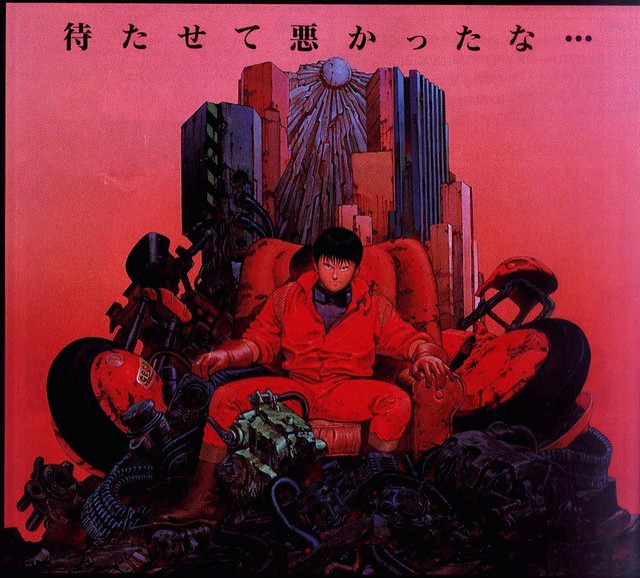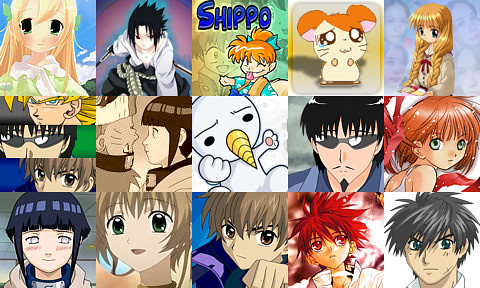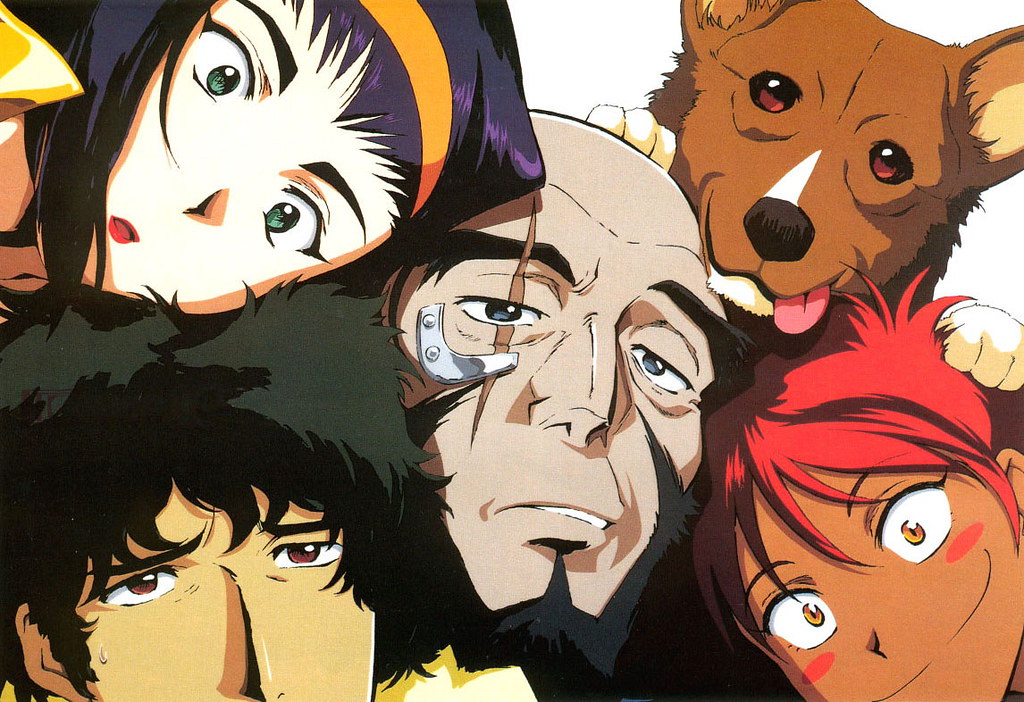The Appeal of Anime
Look back to the early 90s, and you'll find anime - that special brand of animation from
the Land of the Rising Sun - a niche entity, with a small yet devoted following among a few bands of dedicated geeks. Fast forward to the present, and that once niche outcrop
standing lonely in the West is now a towering mountain of popularity, sheltering a huge, multi-million dollar industry across both sides of the Pacific. For those on the outside, the
luster of this Japanese juggernaut seems way beyond us. What’s the big deal, we ask, about
a bunch of cartoons?
Well, a lot, apparently - enough to merit an examination of all the myriad ways anime has touched its faithful
devoted - and why it might fall flat with others.
But first, the brass tacks: anime is not a genre. It is a medium, and that makes a big difference in this discussion. Too often, people toss around careless statements, like “I
don’t like anime” or “Anime is the best,” like you're declaring
a love for comedies or action films. Any snap
judgment about anime centered on a few select tropes is bound to fizzle since it's basically the equivalent of saying you love or hate "movies" in the very broadest sense. Anime as a category is too vast for any kind of all-encompassing
opinion to make a lick of sense, since series like Cowboy Bebop and Sailor Moon have next to
nothing in common - any more than Friends
and 24 can be counted as the same because they’re both live action shows from
America.
So with that in mind, let’s take a stab at why this broad medium reigns in the hearts of many millions of people worldwide.
For the
Love of Animation
Quite simply, you can’t appreciate anime if
you don’t appreciate animation as a medium of entertainment. While there
are quite a few self-declared anime fans who thumb their noses at anything they construe derisively as a
“cartoon,” their enmity is more a rejection of the cultural
baggage dredged up by those other, mostly American forms. Anime forges a connection with those who spurn the idea that they are too
old/mature/masculine/whatever to “waste time on cartoons.” Personally, I’ve always held a great
love for creative media, whether in text, graphic or animation form, and never
miss an opportunity to pass time with a good animated flick or series, no matter where it comes from. Animation is an art form, one capable of breathtaking beauty and wondrous enchantment, and for cultures reared on the Disney formula, stepping out of the "for kids only" cartoon ghetto can be quite liberating.
With that in mind, anime stands out as a unique animation vehicle, with a number of
distinctions that sets the hearts of its fans ablaze. You
can generally divide these traits into two camps: extrinsic factors of the medium
itself - i.e. its diversity and aesthetics; and intrinsic factors bound up with what
the viewers bring to the table, particularly how they concern subculture identification.
A Wide, Wide World
I know I keep beating that "it's a medium, not a genre!" shtick like a red-headed dead horse, but it's needed. We in the West
are often blind to animation's potential through our maddeningly opaque set of Disney goggles, and even as the scales slowly fall from our eyes with the advent of more “adult”
cartoons, it'll be a long time before we see anything close to the stunning diversity found in Japan’s
best studios. Many of the same genres that grace the big
screen in Western box offices, like heavy action flicks, stylized sci-fi and the
like, are equally abundant in anime, and without the constraints of special effects budgets or real world physics. But there are rarer beasts lurking as well: a plethora of teen musical dramas, goofball comedies, gritty didactic fiction,
and other genres that are practically unicorns in American entertainment. Sports dramas, for example, are an endangered species on film, and virtually extinct in series format; but they thrive in anime with popular shows like Hajime no Ippo and Haikyuu!! The infamous “harem” genre, featuring an
average joe or jane dating or even marrying multiple men and/or women, is a no-man's land in the States, but common as dirt in anime. And some of the flat-out bizarre
comedy madhouses like FLCL and Excel Saga have few if any analogs anywhere in the West - animated or not. The freedom inherent to the medium means that all sorts of scenarios you couldn't imagine playing out in real life find a comfortable home under its umbrella.
That Certain (Aesthetic) Touch
Still, anime's tremendous diversity doesn't keep its manifold manifestations from sharing certain traits that split off from
most Western media in culturally specified ways. Anime encompasses a
great swath of genres, from the dark and gritty to the bright and shimmering, but
on the whole it leans towards an idealized aesthetic. At the risk of
generalizing, youth and energy are prevalent dressing on the backdrops of many anime
properties, and in Japanese multimedia as a whole. This is at the heart of the “big-eyed” and
cute appearance of many anime characters, especially those targeted at younger
demographics, and even in less optimistic settings, fair looks and
colorful clothes are not out of place. Not only that, but anime
characters are largely more expressive and emotional than their Western counterpoints, often exaggerating facial features to get a particular mood across. For its
devotees, these traits lend anime a relatability that's harder to find in the more subdued or stiff styles typical to the West, and the expressiveness in particular can heighten the emotional charge, for comedic or dramatic purposes, in very potent ways. However, this bend towards the bright, the colorful,
and the expressive slips between the ire of many anime “haters,” especially those who
equate seriousness with the dark, gritty, or even the grotesque. But besides being superficial to the point of
causing headaches, this line of thinking falls flat against the medium’s
diversity. You don't waltz into a Pixar film and complain about the lack of violence or dark realism; likewise, don't stumble into an anime with bright colors and characters who look like they fell out of a rummage sale truck bin if you want to satisfy those same urges. There's a big enough pie out there to feed anyone's tastes.
 |
| Akira |
A Marker of Identity
But besides the visual feasts and wide selection offered, many fans in the West latch onto anime
as a counterculture identification. Anime has often been a magnet for
many who, either by their own reckoning or others', fall outside of the mainstream: the freaks and geeks, the shy and socially awkward, the derided and the untouchable. There has always
been a certain unity in geekdom, tying cartoon, anime and manga fans together with
fantasy fanatics, sci-fi nerds, and, to a lesser extent, trading card and video
gamers. This knot was a bit tighter way back in the early- and mid-90s, when a
stream of new wave anime like Akira and Ghost in the Shell swept
through theaters as JRPG imports like the Final Fantasy juggernaut dominated console gaming; but even today, there is enough shared ground to
bring all of these diverse fandoms together at massive, city-wide pop culture
conventions. Some fans gather to dissect their animes for peeks into
Japanese culture; some use it as a badge of difference, a line in the sand separating their hobbies from those of the “other” kids. And still others simply
enjoy sharing interests with like-minded people, even as they take a secret pride in knowing said interests are terra incognito to the wider culture and makes their inner circle seem all the
more exclusive. The need to belong is a universal human instinct, and anime is no different from any other trend, past or present, that accepts the perennial social misfits into its sphere. This is all broad generalization, of course, and with the expanded popularity of anime in recent years, it's not uncommon to see the so-called "cool kids" making a fuss over the latest Dragon Ball Super or My Hero Academia episode. But as long as the mark of stigma in any way clings to the medium in the West, it will always serve to shelter those looking for a subculture to belong to.
I know the arguments above might still leave the perplexed scratching their heads in incredulity. To them, I simply recommend asking an anime watcher
in their lives (there's bound to be at least one, especially if children are afoot) and ask them about what they watch and why. They’re likely to drop
a few names and recommendations, so why not give it a
shot? There’s something for just about
everyone, and I'll guarantee you'll find something worth watching.



